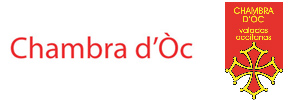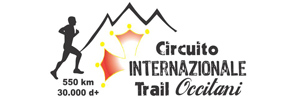In July 2008, on a clear and cool morning, a group of about a hundred people gathered on the church square of Vinadio, in the Stura valley in the province of Cuneo, started walking towards the ridge between Italy and France. It was the first stage of a 70 days journey (63 stages and a few days of rest) throughout the south of France. The final destination was Vielha, Val d’Aran, Catalonia, Spain. The journey was organized by Chambra d’Òc, with the cooperation of all the pro-Occitanian organizations active in the area, as well as with the help of the Fédération Française de la Randonnée Pédestre for the stretch of the Alps and Provence. The aim of the walk was the improvement of knowledge of an area and the collection of information and evidence on the state of the Occitan language.The result of this survey are reported in a documentary, En viatge, by Elisa Nicoli (Chambra d’Òc editions, 2009), which brings together a selection of the most significant interviews, and in the diary of the journey, Walking though Occitania, by Manuela Almonte (Chambra d’Òc, 2009), which relates events, meetings, and everyday life during the walk.
The volume of Paesaggi d’Òc, by Riccardo Carnovalini (Chambra d’Òc, 2009), collects 42 images of landscapes from the Alps to the Pyrenees. The journey was open to anyone who wanted to join
and walk even only a stage or for a few hours. Altogether, the journey of the fixed group – made up of seven people – was accompanied by 1,480 appearances of people who joined the walk with a daily average of 20 walkers, not to mention the numerous students of the calandrettas or of French state schools who shared the walk and have mostly escaped the count. Mayors and other elected local French, Italian and Aranese government officials; large and small communities (but more often small) welcomed the walkers with warm hospitality, demonstrating the meaning and the up-to-dateness of the word convivencia. The walk of Occitània a pè has left a long trail of 1,322 kilometers, exceeding a cumulative elevation gain of 48100 meters. If the numbers can frighten, in practice, the path is easy and accessible to everyone. We mainly chose the marked trails of the Grandes Randonnées (GR) of the Fédération Française de la Randonnée Pedestre which are marked with precision and equipped with equipped stopping places. Only in a few cases we followed less important paths, or (in very few occasions) paths with no trail marks. It is all reported in the guide, which has the aim to make this territory known through the common denominator of language and of the trail of a path.



